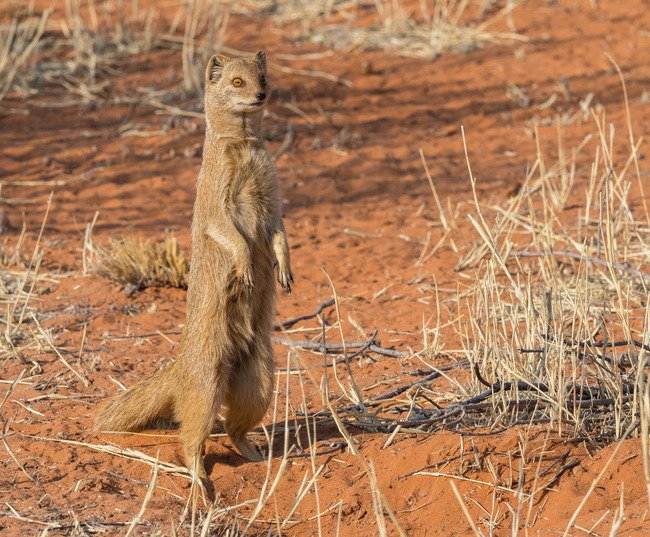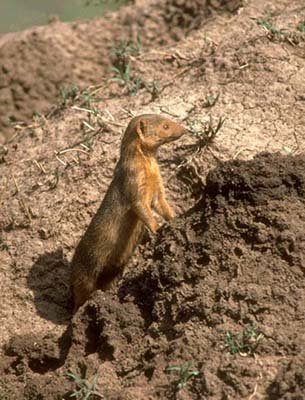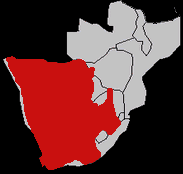SIZE: Length (including tail) 50 cm, mass 590 g.
COLOUR: A varied spectrum, from grey in the north to reddish-yellow or yellowish-brown in the south, with intermediate colour gradations. Southern specimens have a white-tipped tail; Botswana specimens have grey tails. The eyes are yellow.
POTENTIAL LONGEVITY: 12 -13 years
MOST LIKE: Grey specimens may be confused with the Small Grey Mongoose, but ranges do not overlap.
HABITAT: Open country, from semi-desert scrubland to grassland in the area of vleis. The species avoids deserts, thick bush and forests.
The Yellow Mongoose is an extremely sociable animal: they live in colonies of up to 20 but also happily co-exist in underground warrens with ground squirrels or suricates.
If more than one species share a burrow system, they will all help maintain the warren, adding extensions that suit their particular needs, and the warren could end up having as many as 100 entrances.
They are mainly diurnal, although some nocturnal activity has been recorded. Insects form the major part of the yellow mongooses diet, but they also eat mice, as well as birds and birds' eggs. Predators of the yellow mongoose are birds of prey, snakes and jackals.
Members of these species don't all look alike: in the warmer north, the yellow mongooses are grey and have shorter hair and tails, and smaller bodies, than their southern counterparts.
The northern form also lack the white tip to the tail. Usually two young are born, in clean chambers of the burrow system, with no bedding material.
WILDLIFE PARKS AND RESERVES WHERE THIS SPECIES IS FOUND:
NAMIBIA
Caprivi Region
Damaraland
Etosha National Park
Namib-Naukluft Park ZIMBABWE
Hwange
Victoria Falls



